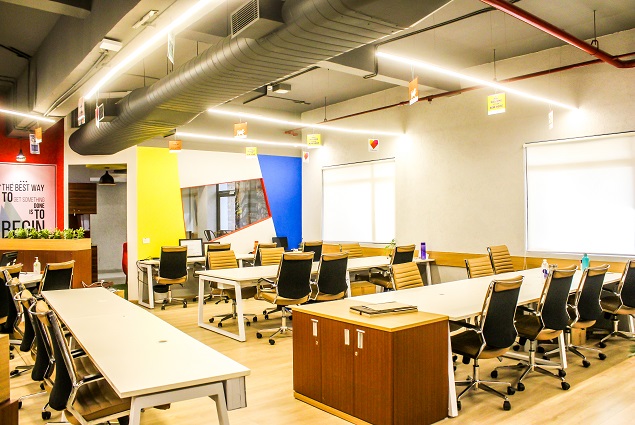Coworking spaces in Delhi are on the rise during recent times, and pandemic times have moved coworking business in the upward trajectory. People who are finding it difficult to adjust to the new normal are looking for a less risky space to conduct the work with more focus and attention. The shared office spaces give you a community where one can connect, socialize, and work.
The flexible workspaces are now a hybrid of dynamic coffee shops and professional meeting rooms in the work zone. The diversity in the formation of these spaces and suitability for business made them a popular choice. The shared spaces are now no more just renting the space; it is all about community and collaboration.
Coworking Space Trends 2020: Things You Need to Be Prepared for
- Maximize revenue from each desk
- More automation and less human interference
- Workspace management with the internet of things
- Change floor work designs
1. Maximize revenue from each desk
With the pandemic affecting every business, every business is looking to make big profits without raising further investments. The spaces will have more spaces under one roof; the management has to work on space utilization metrics. They will be drafting plans to make more from each workstation. There may be a rise in the rental prices for each work schedule, and there may be cut in the timings of each schedule, and the user should be prepared to accept this. This does not mean that there will be a compromise in the quality of the services offered. Unlike the past, the workstations will be distantly aiding the pandemic’s precautions, and the managers will be looking to maximize revenue from each desk.
2. More automation and less human interference
The year 2020 is an automation year that is going to give a new look to the workspace. You will see the spaces more equipped in the year 2020 to meet the needs of the coworkers. They are sure to begin offering new services to the workers which traditional offices cannot supply. You will see the co-spaces with motion sensors that will control doors, lightning in the workspace. The automation features will be incorporated in these flexible spaces to prevent the virus’s spread while you work.
3. Workspace management with the internet of things
The need for comfortable and convenient work stations is on the rise during recent times as people are looking for something between the struggling work from home options and long distant corporate offices. This is the juncture where flexible office spaces have gained more prominence. The development of new wireless technology that can be integrated with software creating industry-specific support makes coworking spaces desirable. The focus is on bringing the internet of things into the flexible workspaces, transforming them into more dynamic areas. These cutting edge technology in the shared spaces are going to play a key role in reducing virus impact in the shared spaces. The technology integration in the future spaces will allow seamless usage of the office and foster continuous improvement. And foster continuous improvement.
4. Change floor work designs
You will no longer see those clustered workstations or people working on the station’s sitting side. You will have new floor designs when you visit the shared spaces after the pandemic. You may see five plus work desks for the floor maintain that needed mandate distance between each workstation combating the virus’s spread in any unforeseen circumstances. You may also see changes in protocols of using common amenities and spaces. Safety concerns will be paramount here as the operators need to demonstrate the highest cleaning safety level to assure user safety.



